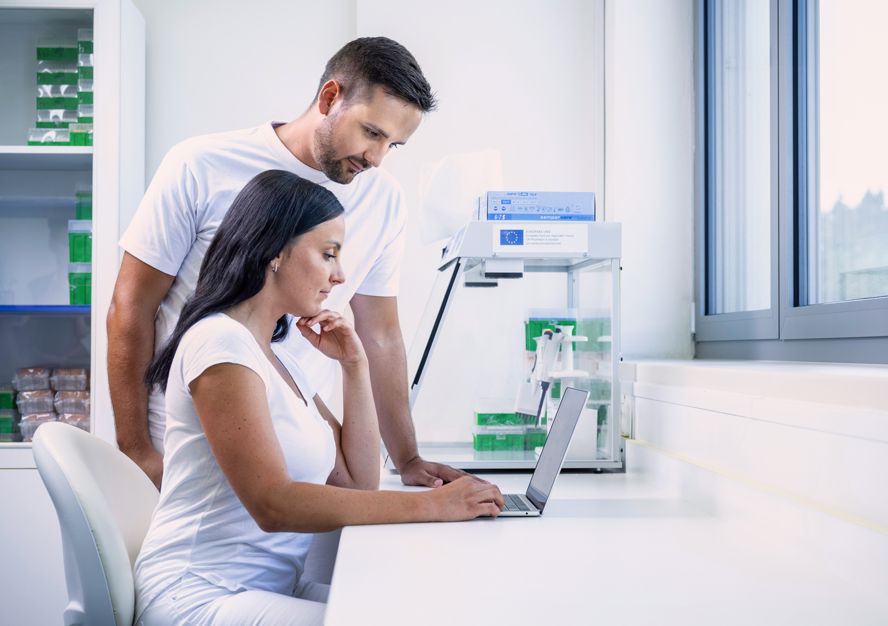
Molecular diagnostics is the most rapidly growing segment of the in-vitro diagnostic market with next generation sequencing (NGS) providing the major technological platform for the state-of-the-art genomic screening of patient samples.
The analysis of genetic NGS data can be a daunting task that often requires specialized computing skills by the user. Together with Bioxsys, we have developed our proprietary web-based bioinformatic analysis software – GENOVESA as an effortless solution for everyone.
In the following interview with Petr Brož, CEO of Bioxsys, you will read about who is behind the GENOVESA project, what the software can already do and what it will be able to do in the future as well as about the very beginnings of bioinformatics in the Czech Republic.
Petr, could you first introduce us to your company Bioxsys, which, as you mention on the website, “Makes sense of your data”?
Bioxsys was founded with the goal of creating bioinformatics software with an emphasis on a robust database solution for NGS data, as we saw the large amount of data that laboratories began to generate within NGS sequencing. Thanks to the relatively good availability of sequencers, more and more of them appeared in practice, and the amount of data to be processed grew exponentially. However, the laboratories did not know how to deal with this data, they still had it stored in Excel.
And we stepped in at this very moment and helped to sort them correctly, store them and finally also interpret them, give them meaning.
Our mission is to correctly and quickly interpret the genetic data, which in the end will help to determine whether the patient has a pathogenic variant or not, and thus what treatment method is appropriate to choose.
At the same time, we are also building computing infrastructures, because bioinformatics is very demanding on calculations and big data, so we offer our own cloud storage, including computing servers.
And we also do bioinformatics training, because we try to educate users about what NGS data actually means, how to work with the data further, and whether they even meet the basic quality metrics.
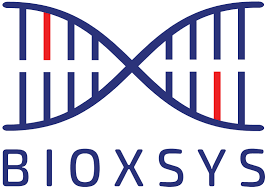
So you focus your activities primarily on the health sector and those you train are generally healthcare professionals?
Exactly. They are mostly clinical geneticists, molecular biologists, and physicians.
Finally, based on these experiences, we started to create laboratory information systems, which enable laboratories to work effectively within a single software. This was not originally our goal, but it led us here because it is important to have the patient data stored in a database in a structured way before the DNA sequencing itself.
With the GENOVESA pilot software, we only dealt with the analysis of sequencing data, but over time we discovered that it was necessary to connect a little earlier and sort the inputs about the patient and effectively connect this whole process, including the data. So the main goal was to create a robust, unique solution that – to put it simply – connects everything from patient data to sequencing data to a final report including accurate diagnostics and treatment proposal.
Anyway, behind every successful company are talented individuals, so let’s go back to Bioxsys. Who is “responsible” for the success so far? Will you introduce us to your team?
Today, the success of the company is due to the teamwork of many people, but the main responsibility lies with me and my colleague Josef Steiger, who is a very talented programmer and holds the position of technical director.
Together we create a unique connection, because Josef is a very experienced developer with really deep experience from database programming to the development of complicated applications. And if this is combined with an experienced bioinformatician who knows the market and the needs of diagnostic workplaces very well, then Bioxsys is created, which is actually the only bioinformatics company in the Czech Republic.
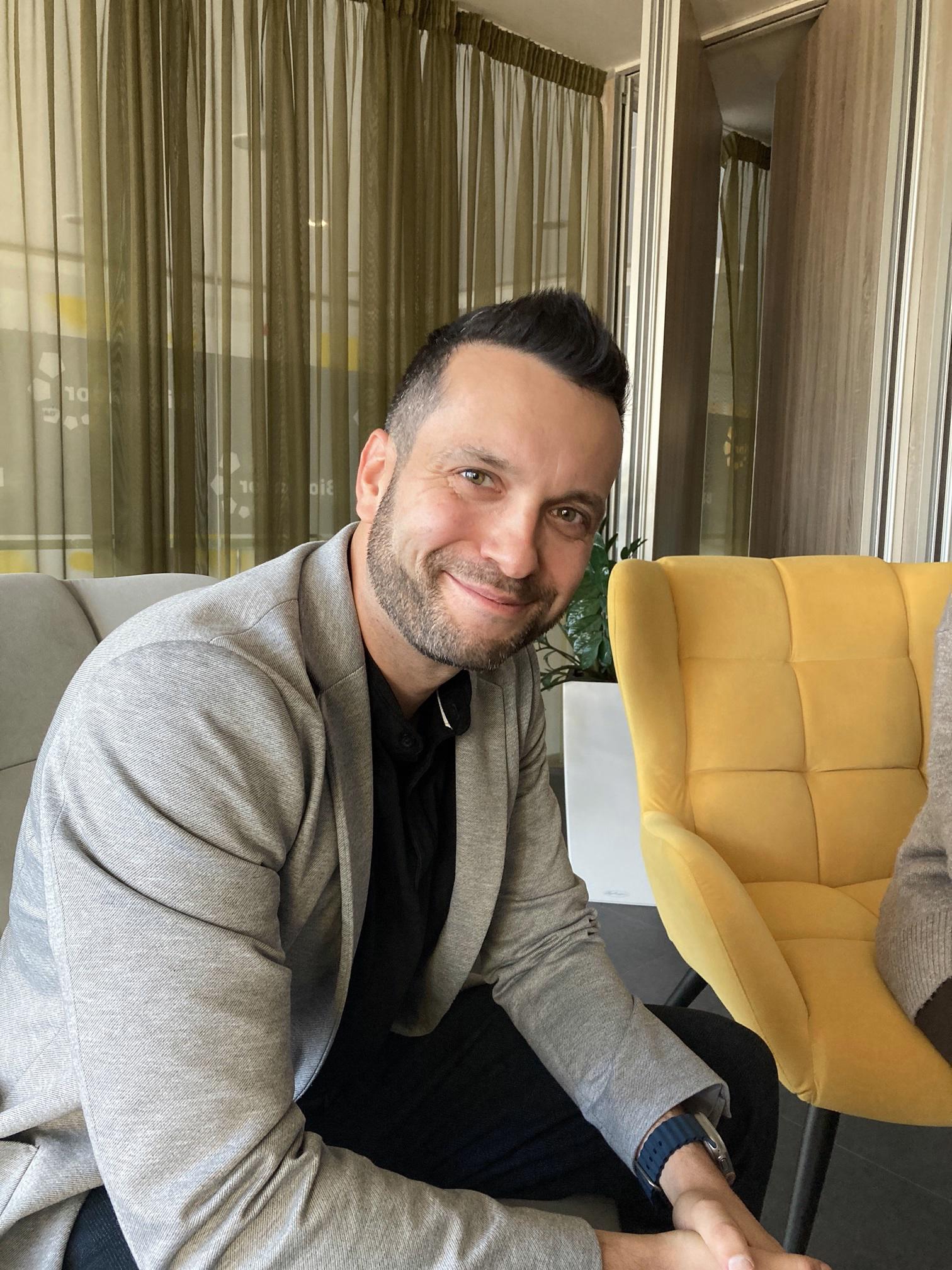
Petr Brož, CEO of Bioxsys
You have filled an incredible gap in the market and are coming up with a solution that all healthcare facilities need today. But how did you persuade your colleague to join you in this project?
I have to say it was a thorny road. My vision was also clear thanks to the fact that I was at the beginning of NGS in the Czech Republic and participated when the first sequencers came to the market.
I had to be persistent to find an experienced developer who would be able to program what I envisioned and at the same time quickly understand the huge potential of the whole project. In the end, Josef was that person. Also we were on the same page as people, which is actually the main criterion for the successful operation of the entire company.
Let’s now move on to why you are actually here at BioVendor Group headquarters today. At BioVendor Group, we believe that cooperation is the engine of innovation, so I would like to ask you how Bioxsys became our strategic partner, precisely in the context of our key NGS project?
In BioVendor, there are many people who see into the future, you can predict well here what the market wants and where the business potential arises.
Our original cooperation began with the delivery of a software solution for sequencing kits, which BioVendor, as a distributor, began to deliver to the Czech market. It was an all-in-one solution, which is much easier to sell than just a separate sequencing kit, for which the customer has to solve complex bioinformatic analysis.
In addition, I already knew a lot of customers – at least in the Czech Republic – they knew they could trust us. They knew who was behind the solution. And that’s how it all started, we became partners when we were able to sell our GENOVESA software with the sequencing kit as an all-in-one package for the first time.
However, BioVendor realized that the mere distribution of sequencing kits does not have the same potential as the development of bioinformatics software and work with genetic data.
Therefore, our common path now leads in the direction that BioVendor wants not only to develop its own kits, but also to participate in the development of the GENOVESA software itself.
And since we at Bioxsys have no ambitions to be a trading company, because software development is essential for us and we want to deal mainly with bioinformatics and deliver the most accurate results to the customer’s hospital, a partnership with BioVendor is the ideal situation for us at the moment. The ideas we have – whether we are talking about the interpretation of variants, filtering, connection to AI – can only be implemented with a great business partner like BioVendor Group.
But it certainly doesn’t end there, if we move further, we have the potential to expand the team, get bigger and have a positive impact not only in the Czech Republic and the EU, but basically in the whole world.
Petr lectures at BioVendor Group
How does GENOVESA work and how does it affect the patient’s daily life and health?
The goal of GENOVESA is to help mainly clinical geneticists interpret the difficult complex of textual sequencing data and determine whether a given patient has a potentially pathogenic variant or not – whether he is “healthy” and I say that in quotation marks, because a genetically healthy individual de facto does not exist.
GENOVESA works in such a way that individual analyzes run in parallel and with a so-called pre-prepared or personalized workflow. This means that there is a personalized analysis for a specific sequencing kit and laboratory. GENOVESA is currently a simple and clear software that works precisely and can evaluate dozens or hundreds of patients in a routine diagnostic laboratory with a few “clicks”.
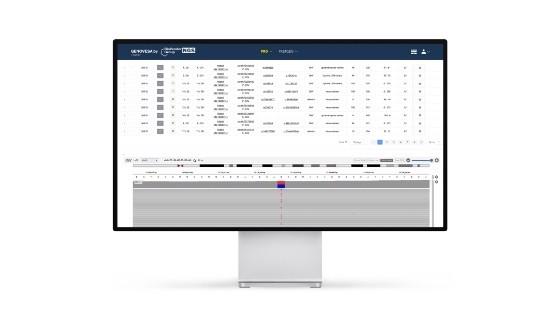
GENOVESA software
And what is the main added value of our cooperation in the context of the further development of GENOVESA?
Originally, it was only the business part that BioVendor was supposed to carry on its shoulders. At the moment, the company is also starting to participate in the development part, where there are visions both on the BioVendor’s side – which are formed in accordance with feedback from customers – and on our side. The combination of both helps us to create a solid product.
If you could personify GENOVESA and give it a superhero trait, what would those superpowers and character traits look like?
My favorite superhero is Superman, and that’s because he’s basically the strongest.
However, the strongest thing that separates us from the competition, where I see the superheroism, is really accuracy, speed, simplicity and the whole flow of data processing.
The creation of a local database of genetic variants for individual genetic laboratories, i.e. the hospital, speeds up the interpretation of new patients. When a new patient arrives and an intersection with a historical record is found in the database, the interpretation of the given variant is incomparably faster. And our big vision is for the clinics to share their data in the database with each other on the principle of reciprocity and thus actually act in favor of the patient, who will not have to wait so long for his result.
So we could summarize the whole thing in four points – patient database of variants, accuracy, speed of result and sharing of variant interpretations.
But at the same time, the great strength that GENOVESA has is in how we have structured and normalized data. Thanks to this, we have a quality basis for other large projects, such as national genomic studies, whole-genome sequencing and more...
Reciprocal data sharing between clinics sounds like an ambitious plan. But how is this sharing of data between clinics actually handled?
If clinics decide to use the option of sharing interpreted variants, they will enter into a mutual agreement.
Based on this agreement, we will then enable the sharing of their interpretations within GENOVESA. The data is pseudo-anonymized, it is only a classification of the variant in the genome without further identifying data about the patient. In practice, this already works for several private clinics that use GENOVESA.
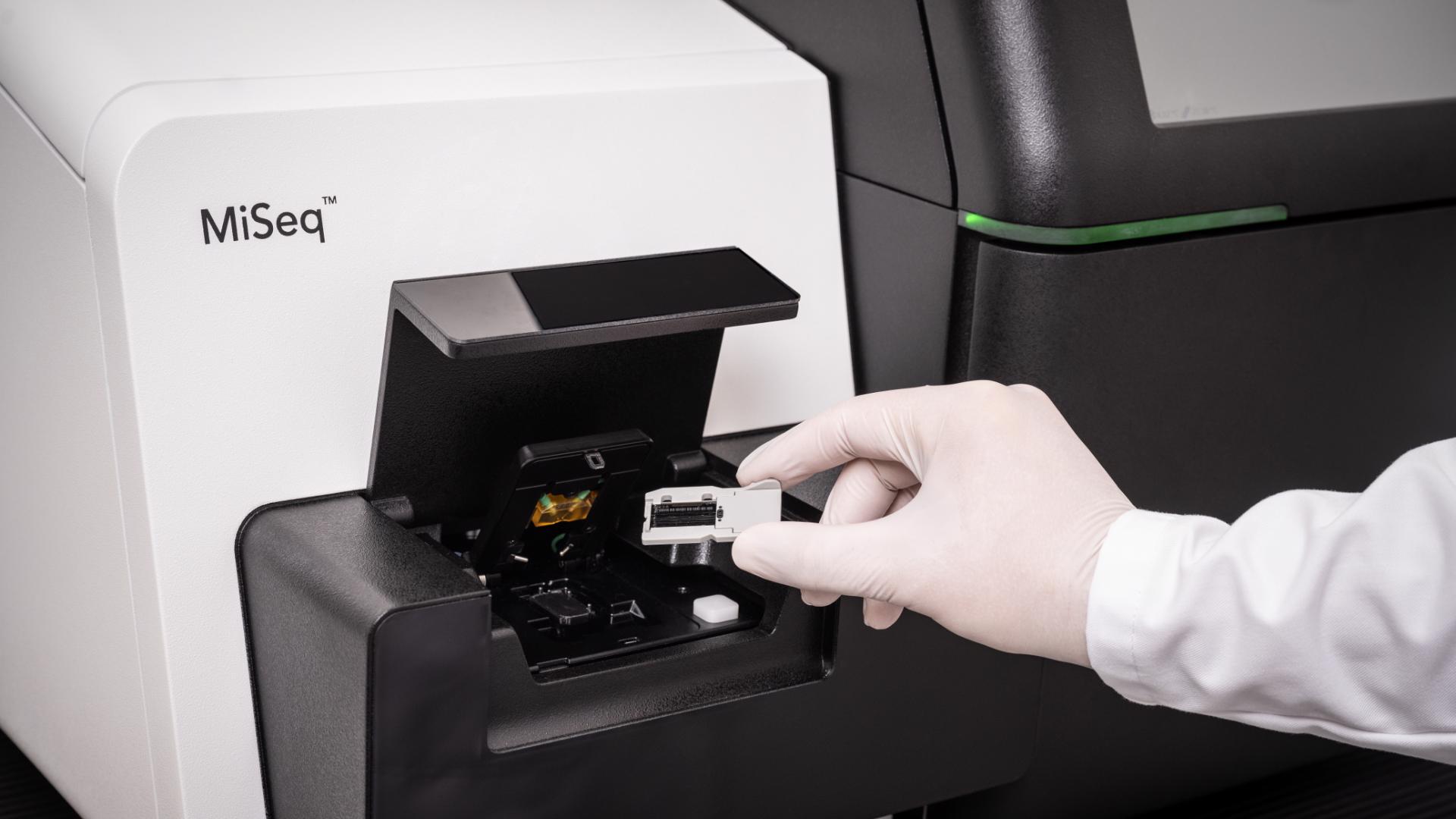
NGS sequencing
We talked about superheroes and they like big challenges. What challenges do you currently face in the field of NGS? And how do you plan to overcome them?
One of the big challenges is to explain to customers (or end users) the big plus of the GENOVESA solution, and that is our database with the possibility of sharing interpretations. This differentiates us from standard NGS softwares that evaluates data and analyzes only tertiary.
Another challenge is global expansion. Related to this is the need to expand the team that takes care of the GENOVESA project. Also because the trends in bioinformatics and IT in general are incredibly variable and new types of algorithms are created every year.
And what we would like to implement is the use of AI technologies to predict pathogenic or benign variants, which would make it easier for users to evaluate them.
In comparison, how much of a speedup are we talking about when AI is involved compared to the current state?
Evaluation of whole-exome data of one patient can take several days today. Thanks to automatic prediction and using a shared database, we are able to speed it up to hours.
And it is not only about speeding up, but of course also about making the analysis itself more precise. Unfortunately, many annotation databases that are commonly used today are not properly normalized, so not all the outputs we get from these annotation databases are valid.
Which is quite risky at the moment when the diagnosis or therapy for the patient is being decided...
Yes, it is a really big risk. In short, we divide the genome into germinal and somatic. The germinal genome is what we are born with and we cannot change it, it determines our predisposition. For somatic, we sequence specific tumors, for example, after a biopsy and observe what their DNA structure is. And according to the type of substitution, we are able to determine which medicine will be effective for that particular tumor. So the interpretation of the variant is of great importance, whether in somatic or germinal molecular diagnostics...
In theory, will we find out that there was an error in the annotation database only at the moment when, for example, the patient does not respond correctly to treatment?
There may be a problem with the quality of the input material, with the quality of the sequencing data, perhaps also an error in the interpretation. Of course, it’s not all about the sequencing itself. An important role is played by oncologists, clinical geneticists, histologists and other specialists for the given tumor type.
Today, however, the role of the histologist can be replaced to a large extent by NGS and bioinformatics, because we are able to use so-called methylation profiles to classify a given tumor often better than the classic microscopic method.
Before we move away from GENOVESA, one more curious question – why the name? How did the name originate?
We came up with that at Bioxsys, we wanted something that would declare the word gene to make it clear that it was software for processing bioinformatics data. It was supposed to be unique, simple and user-friendly.
Genovesa is a beautiful island in the Pacific Ocean with coral reefs. And since I like diving and my colleague Josef likes to travel, we immediately agreed. The word gene resonates there, and as for Genovesa Island, we also have that uniqueness and beauty there. So GENOVESA.
Have you ever been to that island?
It wasn’t. So far only with my finger on the map, but maybe it will happen someday...
We mentioned bioinformatics as your main field. Can you share with us what discovery in bioinformatics has ever amazed you the most?
For me, bioinformatics is mainly associated with NGS technology, which arose thanks to the discovery of SBS – Sequencing by Synthesis, which Illumina first came up with around 2000. It is the possibility to read many DNA fragments in parallel and thus generate a large amount of so-called sequencing data, which consists of a combination of the four letters ACGT. These data are further bioinformatically processed until we get individual variants, or substitutions, which can be simply put, benign or pathogenic.
It was a great timing of the discovery of SBS technology and the development of new algorithms that enabled sequencing data to be efficiently processed and this gave rise to the modern field of bioinformatics.
Does this mean that it coincided with the timing of the fact that we also started with molecular diagnostics here at BioVendor?
At that time, I was at your place giving a one-day course on NGS and data processing, and based on that, our cooperation was born.
The first joint commercial project was a collaboration during the COVID-19 pandemic, when we used the foundations of GENOVESA. Thanks to its modularity, we were able to very quickly create software with the commercial name COVID and thus became the most successful on the Czech market. Three quarters of the sequencing data that was analyzed in the Czech Republic went through our software. It was de facto your kits and our bioinformatic analyses.
Read more about this success in our article in the Media Centre.
But let’s get back to bioinformatics, what three main trends in bioinformatics do you currently see as essential?
I would first mention NGS sequencing and especially the recently very popular so-called long ready sequencing, RNA sequencing and analysis of the expression of individual genes and, last but not least, AI, which can very effectively help in the prediction of pathogenic variants.
When I asked artificial intelligence, it also mentioned bioethics and data security, among other things. I would like to have one more question. How is data security handled in your company? Could you please explain this to the software laymen so that they are not afraid to trust us with their DNA data analysis from Genetify?
The big problem with many commercial companies that process NGS data in the cloud is that they use infrastructure from, for example, Google or Amazon, for analysis and data backup, which is not considered by us.
This, in my opinion, is extremely dangerous, because sending data to a third party means for us that we lose control over it at that moment and we do not know exactly where it may be stored.
We have our own computing infrastructure and know exactly where the data goes and where it is stored.
Another thing is the security of the data center itself, which meets all certifications for security and data protection.
The last security layer is encrypted access to GENOVESA, including the use of a so-called security token, which is a unique long code with which each user logs in.
And finally, let’s talk about what will be key in the future. How can Bioxsys surprise us in the coming years?
Our plan is to start programming neuronal networks that will help us to effectively interpret variants and link them with so-called multi-omics data. This means using not only sequencing data, but also proteomic data, methylome data, RNA-seq data, microbiome, integration of other sequencing technologies such as long-ready and others...
Linking such data with a laboratory information system and AI can have a huge benefit not only for the patient, but also for the examining physician in this era of personalized medicine.
That sounds like a task for Superman…
It is, but it’s real. It’s not science fiction. We know how to do it, just get down to it...
We will look forward to it and keep our fingers crossed. Thank you for the interview, Petr Brož.


